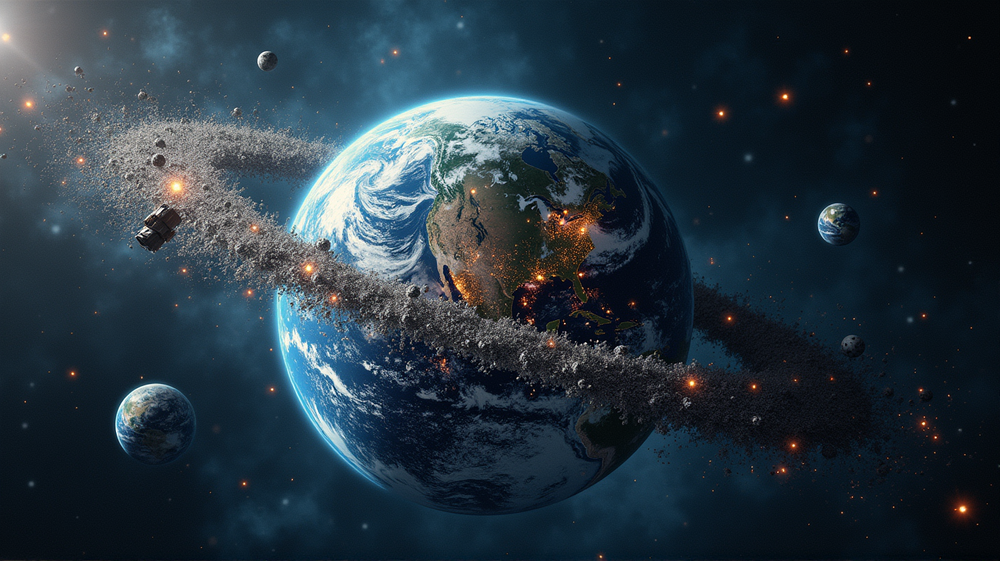Every action has an equal and opposite reaction, or so the laws of physics tell us. But what happens when these reactions spiral out of control and threaten our very exploration of the cosmos? Our planet’s orbit is currently an intricate dance marred by danger, with millions of fragments zipping past each other in a deadly ballet. Welcome to the alarming reality of the Kessler Syndrome.
Invisible Islands of Danger
As of April 2025, our planet’s orbit hosts over 1.2 million pieces of space debris larger than 1 cm, with 50,000 boasting a size worthy of genuine fear — each capable of completely demolishing an operational satellite. The rapid rise in small satellite launches, linked to burgeoning commercial mega-constellations, has exacerbated this cosmic clutter.
Reverberations of a Collision
In an eerie echo of science fiction, the space community watches complications from what once was theoretical — a self-sustaining cascade of satellite collisions. Known as the Kessler Syndrome, this phenomenon grows alarmingly real, threatening to make vital orbital areas inaccessible for generations, as per predictions from NASA scientist Donald J Kessler in 1978.
Critical Missteps and Close Calls
An incident from June 2024 paints a vivid picture: a Russian satellite fragments, spewing 100 new debris pieces into the void. This triggers evasive maneuvers for the International Space Station and introduces a fresh set of hazards for commercial satellites. The 500-600 km altitude range is particularly notorious, where satellites dodge debris up to 30 times a year.
Earth-bound Perils
Not all problems stay in orbit. Over 1,200 objects fell back to Earth in 2024 alone, with a SpaceX rocket part discovered in North Carolina and a larger debris chunk near Kenya’s Mukuku village. Although casualties remain unreported, these events underscore the escalating risks associated with unchecked space debris proliferation.
Toward a Cleaner Horizon
Amid this looming crisis, the European Space Agency (ESA) heralds a forward-thinking “Zero Debris approach,” intent on eliminating new debris by 2030. With pioneering missions like ClearSpace-1 in 2028, and state-of-the-art technologies like the DebriSense-THz system, efforts are ramping up to outpace the collision curve.
A Collective Call to Action
SpaceX, a titan of satellite operations, is urged to align with the ESA’s charter, as global governments ready stricter regulatory frameworks. The call for collective action echoes across agencies, reminding us that without stringent, coordinated regulation, the science fiction nightmare of Kessler Syndrome could solidify into our everyday reality. As stated in Business Today, an unwavering resolve and mutual commitment will define the steps taken to safeguard the generations to follow, ensuring exploration beyond our atmosphere remains a vivid dream rather than a forgotten echo.












